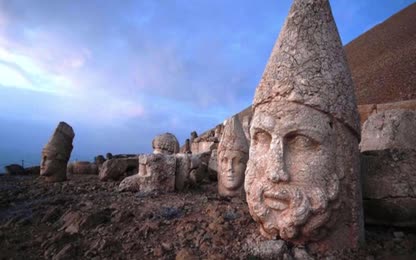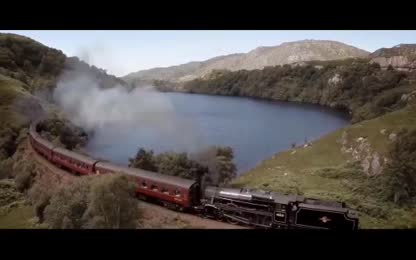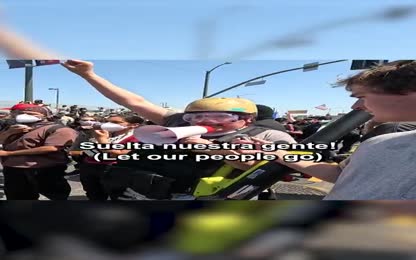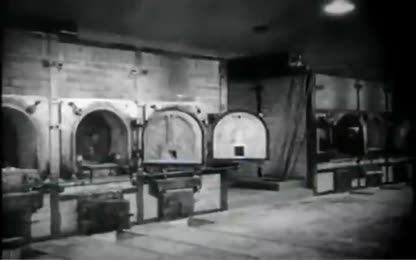Advertisement
The big lie - Holocaust - Part 1
The big lie - Holocaust - Part 1, From 1 min 12 sec - English speaking
Den stora lögnen - Swedish text.
- Category: Holocaust / Holocaust History
- Duration: 58:23
- Date: 2019-05-09 20:02:04
- Tags: den, stora, lögnen, (förintelsen), del, the big lie, holocaust
2 Comments
Video Transcript:
I'm going to go to the next room. I'm going to go to the next room. I'm going to go to the next room. I'm going to go to the next room. I'm going to go to the next room. I'm going to go to the next room. I'm going to go to the next room. I'm going to go to the next room. I'm going to go to the next room. I'm going to go to the next room. I'm going to go to the next room. I'm going to go to the next room. I'm going to go to the next room. I'm going to go to the next room. Ray is a 2018EO AM Spielbergs, USC Survivors of the Show of Visual History Foundation Contains almost 50,000 video testimonies. Out of 50,000 testimonies, the Show of Foundation hand picked of hate-filled liars and Zionists for their documentary. Surely, at a 50,000 video interviews, there must be some Jews telling some semblance of truth about life in the concentration camps. We also had an orchestra where some of the musicians stood together and one musician was so good that he had the instruments playing and he wrote the notes so later on we had a band who played over the weekend and that was of course helping us, you know, we also did plays and stuff. Were there any cultural activities happening in Auschwitz? Yes. I told you we had a piano put into a not just a piano, a grand piano was brought into block one. That was built, that new block. The downstairs room was assigned for theatre. When he wanted to build a stage curtain in that new block one which was one big dining room was going to be also a stage so performances could be done for women there, cultural. He said for heaven's sake, isn't there anybody here who can help me so on these curtain rings? For the stage, I do it for you, he says. When I came forward and I helped him with the curtain stage and that was wonderful because I had a man sitting across me for a change. And my roommate is in charge of work assignments and if you happen to know music what instruments do you play? I said I learned piano but not good enough on orchestra. I can tell you that right now. He said well then maybe you know the notes. I said yes, he said well then I can use you because we have to write it from the original music piece what the director gets to the instruments. And so for each instrument has only a short line on the whole paper so I had to take it apart and write for each instrument from that what I had to do. I had to even make the lines we didn't have paper that was pre-printed for notes, nothing. So I spent the whole day there for a while until we were taken away from Auschwitz. Then she saw me work there and I had a big table where I could work and lay out all the paper and it was very peaceful and relaxing and Otto wanted to talk more to me. That is when I met that SS man at one time. That was the last job I did while I was in Auschwitz. And when I the other job that when I was in block 10 we went out to pick the leaves and from these leaves they would make tea for the whole camp for the whole Auschwitz. How did you entertain yourself? At the beginning of those days there was a library where people could get books to read. There were newspapers which we could get. And also among ourselves sometimes we had a violin quartet used to come and play in barracks. Later on they said they were going to build a movie in the camp. And the president said, only the view must be crazy. They got a movie for us in the camp. And they really had to make a movie in the camp. And we went in barracks after a bar because we could go to see a movie sometimes in the evening. They brought movies in the evening. What kind of movies would they show? German movies. But once I came to the main camp there were a lot twice a month to write home. And they gave us postcard and once a letter. They gave you the materials? Yeah they gave us the letters, the materials we could buy. How did you get those stamps? We could buy stamps. You had money? Yeah we got money, we still got money. We got through the Jewish community from Vienna who sent us everybody some money. And in the camp you could have currency? Yeah they could have money because there was a camp also called a cantina. And not many times. But once in a while they sold a few cigarettes or their swords. Something whatever they had. So if you had money you could buy it, the cantina there. But there wasn't really any food, usually sold and sometimes the sold. There was also some weak beard sold also in the cantina. But not really anything else, not much, mostly cigarettes. And when you went to the movies did you have to pay? Yes, we had to pay. After the money stopped, the regular money stopped. We got paid in coupons then. Paid for you work? I don't know if it was for whatever. We got paid for in coupons which were redeemable in the cantina if they had something. So that was their way of distributing money. To everybody, everybody got this money then. Of course what we did is for the weekends we got together, we got a group of us together. And we made a soccer team which was a little later, maybe played soccer. It's amazing that there would be a soccer team, there would be enough energy left to do something like that. I don't think we were quite as energetic as we were with the other regular team, but we did something to, you know, it kept our mind of the problems we had. You mentioned to me the other day that Monowitz was like a college library. Well that was... Especially the Germans start losing the war, 1943, 1944. So 1944 we had soccer games in Rosalos. Soccer teams, we had organized very well. Soccer teams, each nationality organized soccer teams. We organized our equipment everything in the play soccer on the assembly line, on the assembly place. So it grows frozen? So you know that much, three years was, but it was 1944. The Russians already pushed away, Americans already invented it from the other side. So they had to give more freedom. But that was much more freedom. And the foot didn't improve very much because, simple reason they didn't have a very much themselves. Did the civilians try to help you at all? Did they trade goods for things? It's just to say that we have almost everything, what we wanted, what it's... Soccer teams, from the civilians, from outside civilians. But that was strictly under cover, as I said, they knew it. They knew it, but they didn't do much about it because they knew the war was almost over. So they didn't even play at soccer with us. That just to make the store funny, that the toy incident funny, that one time they polished him play against German teams and one of the listed, top listed assessmen decided he wants to play for the polished team. So we say, okay, we can play for us. And then they commanded, they said command it. He was like a captain. He decided to want to play for the German team. So he went in the field, but then they were a little bit tipsy. How did you feel about that? And the funny part of it, we said, we should let them play, that they all would bite themselves. We just let them out of it. But that was one of the incidents which stuck so funny on it. But that's happened. But it was not in 1944. So it's almost things came to a close. So is what you're saying then that the closer the end of the war came, pressure was let up rather than becoming more cruel or... In our camp, pressure, you did feel the pressure laid up. Freddie Hirsch called me to the children's barracks. He was heading then. And he asked me if I could paint something on the wall for the children. And I said, well, if you can get the materials, he said, I'll get the materials. I said, okay. And then a very handsome young blonde man from the men's camp came over one day. And Freddie Hirsch called me to come and meet him. And he asked me what I need. So I said, well, if I can get any wall paints, so any tempera paints, I would like those if you can get me some. And he said, yes, anything you want. And so before I knew it, Freddie had the stuff ready for me. And I started painting. At first, not knowing what I looked at that huge drab. It was kind of olive colored like all the barracks were wall. And I thought, well, the thing to do is to make it look like we are in a Swiss chalet under deck. And there is a ball of straight with flowers on flower pots on it. And we are looking out at the beautiful metals and maybe see some cows and sheep and stuff. And I started painting. And then afterwards far in the distance, I was putting some sheep and some cows. And then I noticed that all the kids were standing around me, behind me. So I turned around and I asked them if they would do they have any special wish to put in that metal. And they said, snow white and the seven dwarfs. And that was a very surprising answer. So I made a painting of dopey standing on another dwarfs head with a cloak around him. So he looked like a tall guy. So he would be a stall of snow white. And they were dancing together. And the shoes, those soft shoes and everything. And the kids loved it. And I made some other dwarfs around one who was playing the accordion. I think there was grumpy, the mean one. And the professor with the glasses. I made almost all the dwarfs standing around. Some of them were clapping. And that's what the kids liked. I now understand that there was another painter who continued something painting on the walls after I left. I don't know about that. When you were in the process of doing that? What did it do not only for you, but for the children? On an emotional level? Well, it did several things, not just emotional, but the children then wrote a play which was a satire of snow white and the seven dwarfs. So I figured out a way of making a crown out of paper. And the kids were painting it gold and putting like jewels on it. And then I took some paper strips and I painted them with a black paint. And I don't know about the costumes, what they made costumes out of. But the play was very successful because the little girl who was playing snow white had an incredible voice, a gorgeous soprano, just like the one that you hear in the movie. How were they allowed to put on a play in Auschwitz? I don't know, but it was done kind of quite hush hush all of it except that when it was put on suddenly some asesmen appeared and they watched. Herman Rosenblatt does have a real story of survival in the Nazi concentration camps, a story that is genuinely extraordinary. But as he explained to us in this exclusive interview, he felt he needed to make things up to get people to pay attention. Come by every day, bring the apple heaven my jacket and a piece of bread and used to say I'll shoot the moral. The story landed Herman and Roma Rosenblatt on Oprah twice and in newspapers all over the world. They also got a book and movie deal. But the story wasn't true. Why did you do it? Why did you tell such a big lie to so many people for so long? It wasn't a lie. It was my imagination. And in my imagination, in my mind, I believed it, even now I believe it, that she was there and she threw the apple to me. How can you say it wasn't a lie? It wasn't true and you know it's not true. Yes, it's not true. But in my imagination, it was true. Rosenblatt says he made the story up to give people hope and to promote understanding about the Holocaust. So you were not motivated in any way by money? No. This is from your son. He said that he knew you were lying for years and he couldn't get you to stop and here's his quote. It was always hurtful. My father is a man who I don't know. How do you respond to that? I don't know. I can't respond to it. I don't know why he said that. I don't know what. And maybe I'll ask him. And a lot of people did go to the Bob Wire. There was electricity in the Bob Wire. Every time there was a transport coming through, the electricity went up and the Bob Wires were electrified. So they were controlling it when it was on and when it was off. When it was on, people would walk up to it just to die. When they saw that too many people were taking their own lives, that didn't satisfy them too well because they wanted them to die when they wanted them to die and not when the people wanted it to die. So they said, for every person that's going to take their lives, they're going to torture to death by of us. So of course everybody ignored the Bob Wire from then on and nobody died at the Wire from that day on. And so when the electricity went on, they ran to the Bob Wire to commit suicide, then they punished us for every man that ran to the Wire. They took a hundred inmates and they killed them in front of everybody as an example. They didn't even let us die when we wanted. So they said, for every person that's going to take their lives, they're going to torture to death by of us. So of course everybody ignored the Bob Wire from then on and nobody died at the Wire from that day on. And so when the electricity went on, they ran to the Bob Wire to commit suicide, then they punished us for every man that ran to the Wire. They took a hundred inmates and they killed them in front of everybody as an example. They didn't even let us die when we wanted. Nobody could approach that place in my downic because apparently they would kill the infants and make lampshades out of baby skins or soap or baby fat. I showed a pit in Auschwitz where they made soap from people. They throw in people and took the fat and make soap for the German military. Boiling water. Big pool. We have soap made out of human beings. RIF meant Ryan Yudishfet. Pure Yusufet. Pure Yusufet. Still the manager of the Oversharfeur gave me a piece of soap and said, how's the kitchen you desire made out of Jewish fat? .§ the important point here is that there's a sign at the at the at that cow notifying tourists of that that it was not used to kill so why did you just show it in the clip I'm not at all sure that was that was that was that what the man no one in the minute you're not sure that with doc how you show a clip on your show and you're not sure it with doc how okay look it doesn't matter because no way because it doesn't make his point history is is knowledge and like all knowledge of progresses and changes we continually refine our certainty about claims and so we once thought there was human soap the human soap story was true now we know it's not and and that's what historical revisionism is all about you The twelve hundred civilians walked from the neighboring city of Baymar to begin a forced tour of the camp. There are many smiling faces in according to observers. At first the German's actors of us were sent and being staged for their benefit. One of the first things that the German civilians see is they reach the interior of the camp is the parchment display. On a table for all the gaze upon as a lampshade made of human skin made of the request of an SS officer's wife. Large pieces of skin have been used for painting pictures, many have been obscene nature. There are two heads which have been shrunk to one fifth their normal side. These and other exhibits of Nazi origin are shown to the townspeople. The camera record the changes in facial expressions as the Baymar citizens leave the parchment display. The tour continues with a forced inspection of the camp's living quarters where the stench, filth and misery defied the description. The camera record the changes in facial expressions as the Baymar citizens leave the parchment display. The tour continues with a forced inspection of the camp's living quarters where the stench, filth and misery defied description. They see the result of lack of care in the bad case of French book. Other evidence is a power of brutality and human indecency were shown and these people are compelled to see what their own government had perpetrated. The correspondence assigned to the book and bought story have given right notice to the well fed well dressed appearance of the German civilian population of the Baymar area. The tour continues with a forced inspection of the camp's living quarters where the stench, filth and misery defied description. The tour continues with a forced inspection of the camp's living quarters where the stench, filth and misery defied description. The tour continues with a forced inspection of the camp's living quarters where the stench, filth and misery defied description. The tour continues with a forced inspection of the camp's living quarters where the stench, filth and misery defied description. The tour continues with a forced inspection of the camp's living quarters where the stench, filth and misery defied description. The tour continues with a forced inspection of the camp's living quarters where the stench, filth and misery defied description. So none of the corpses seen in these images were gassed. What you see in these images are prisoners who died from disease as well as a lack of appropriate food, water and medical supplies. A large part of their condition was due to the Allies bombing supply lines to the camps. Allied fighter planes even bombed and strafed train loads full of prisoners as they were being evacuated to different camps. Those prisoners who weren't hit by bullets or bombs were without appropriate supplies for days until arriving at their destination. The liberation of Dachau concentration camp is dramatized in the film Shutter Island. The Americans liberating Dachau came across what became known as, quote, the Dachau Death Trains, unquote. They saw bullet holes in the sides of the trains and dead prisoners inside in terrible condition. Believing the Germans locked star prisoners inside the trains, the machine gun them, the Americans turned their fury to the capture of German guards. The Germans were killed by the Germans and were killed by the Germans. The Germans were killed by the Germans and were killed by the Germans. The Germans were killed by the Germans and were killed by the Germans and were killed by the Germans and were killed by the Germans. The Germans were killed by the German guards and were killed by the Germans and were killed by the Germans and were killed by the Germans. There was a warfare. It was... it was murder. Many of the German guards who surrendered the camp had only recently been transferred to the camp in the final days of the war. Some were just teenagers from surrounding towns. Ironically, this young German guard even looks like the young DiCaprio. This young German was not a deliberate holocaust of Jews or anyone else, but a young man tragically swept into the final days of the most brutal war in the history of mankind. The German soldiers surrendered and with their hands up, the American shot dozens of captured unarmed German guards. And it didn't happen in the heat of the moment, either, as this movie suggests. In fact, the Americans actually brought the guards to the camp's colyard, got a heavy machine gun from their vehicle and brought it into position, and they had their army photographers take pictures of the event. As this photo and others prove, it was a war crime. The Americans played judge, jury, and executioner. They even dragged German soldiers from a nearby hospital and shot them, even though they had nothing to do with the camp at all, let alone the death trades. Here is the testimony of one of the Americans involved in this murder. I was not prepared for what I saw in Daca. Nothing could prepare you for that. Nothing could prepare you for that type of slaughter that was carried on in that camp. I never like to see people killed unnecessarily, no matter what their stripe is or what they have done. We did kill some people that I consider unnecessarily. However, given the circumstances, well, I'm sorry about it. It was just one of those things that no one could control. Actually, the people that we killed died a much easier death than the people that they tortured and killed as we subsequently found out. Torture and hangings and execution in various manners was a daily occurrence. So in a way, we were kinder to them than they were to the people that they murdered. The only problem is that the people he helped to kill were not those who had run the camp for many years. But evidence has come to light that the Germans did not lock prisoners inside the trains and machine gun them. The bullets which tore through the trains full of prisoners were not German bullets, but in fact the result of Allied warplanes strafing the trains. Here's a Jewish former prisoner talking about the Allies bombing and shooting his train, killing prisoners on the way to Dacao, explaining their condition. I was ordered to go marched out to the railroad station back into the cattle cars, but this time they had open wagons and regular cattle cars. But the only difference was that the railroad tracks on one track, the Nazis were retreating with the heavy artillery ammunition and all their hardware. In another fact, the concentration campings in the train road. The Nazis were hoping maybe because we are there, they will not be bombed. It was a short trip, but it took us almost three days to get to Dacao. What had happened, we got hit by a raid. They bombed the boat of the tracks, the machine gunned our train. In a train where I was sitting, this time it wasn't so loaded, we were all squaring down. Both of the fellow beside me got hit by the machine gun fire. I just, by then, the guards were gunned. We opened the railroad car and stumbled out of the car and walked into the woods nearby and hit there. Remember going out on the fields and dug up some potatoes for food. But they came back next morning or a day later, with dogs, gathered us together and ordered us back to the railroad cars. They never removed the bodies. This is how we arrived to Dacao. This used train was bombed and shot by Allied planes. The prisoners, the allies killed, were left inside the train. Prisoners who weren't blown up or shot by the allies, suffered further malnutrition, in part due to the bombing of train tracks delaying their journey. The allies were directly responsible for killing many on these death trains. Bullets from Allied airplanes tore through the bodies of those prisoners. Shortly before the American infantry arrived at Dacao, American infantry ignorant of the role of Allied bombing and strafing runs, contributing to the deaths of the prisoners inside the death train. They put the blame on the Germans. They lined the unarmed, surrendered German guards against a wall and executed them, committing a war crime which has gone unpunished to this day. Misunderstanding propaganda, falsehoods, blind patriotism, mistakes, rushing to judgment, how else could millions be driven to killing their own people themselves essentially. The war was a warfare, it was murder. The allies also directly bombed concentration camp prisoners, and today we are told this is proof of a German planned holocaust. This is another segment from the American propaganda film, Nazi concentration camps, which was shown at the Nuremberg Trials. The slave labor camp at Nordhausen liberated by the Third Armored Division First Army. At least 3000 political prisoners died here at the brutal hands of SS troops and pardon German criminals who were the camp guards. Nordhausen had been a depository for slaves found unfit for work in the underground bebom plants and in other German camps and factories. A deceptively captioned image of Nordhausen appears in Stephen Spielberg's The Last Days Companion Book. We see American soldiers walking past corpse's strewn on the ground. The caption reads, the horrific scene of mass annihilation within the Nordhausen concentration camp. Let's look closer at the photograph. We can see the buildings have been bombed. Testimony of former prisoners shows they were lucky to survive Allied bombing attacks. This Jewish former prisoner and doctor describes prisoners laying in the camp hospital sick of tuberculosis in the final days of the war. And there I had over 4000 prisoners laying on tuberculosis. Sick? What you're doing is tuberculosis. No medication, nothing. Hardly food. It was very meager already. The Germans didn't have to eat. This former prisoner and doctor described conditions in the camp in the final days of the war. Sick prisoners didn't have enough supplies. However, he points out that Germans themselves also didn't have enough even to eat. Clearly the Germans could have killed the sick prisoners at any time, yet instead treated them in hospitals. In all of a sudden it was April 7th at 3 o'clock in alarm and American Air Force over us and dropped the bombs just on our camp. But the whole camp was entirely destroyed. And out of 6,4,000 people we were 200 survived. Because the Germans were hanging in the ceiling, bodies and it was awful. It was burning days and days. We were still, if this nurses, doctors, administration, people, work and information, we ran away. And the Americans made a mistake because they didn't know this is a concentration camp. They knew it is a military camp. They emptied the military a month before, in January, we put us in, you see. So they didn't know. So they came back at 9 o'clock in the morning and hit the whole city. We ran away in the fields and when they emptied the planes they came and strived us with machine guns. They could know who this is, all the Germans. And we went into the woods and we remained about a week in the woods. And we ate only the raw potatoes. British Royal Air Force bombed the camp full of sick prisoners. They turned around and shot survivors running for their lives. They flattened the nearby town full of innocent German civilians. The British are primarily responsible for the scene of, quote, mass annihilation. But images of Nordhausen recently bombed and strafe by British planes are still used today as proof of a delivered German planned holocaust. And it's important to note that most of those seen in this photograph aren't even Jews, but primarily non-Jewish political prisoners, including Poles, Russians and Jehovah's Witnesses. These majority non-Jewish victims of Allied bombing at a former labor camp are used to sell a supposed Jewish holocaust. The Oprah program deceptively used two shots of the aftermath of the British air raid at Nordhausen. More than six million of those human beings were Jewish. This victim of the Allies blowing up and strafing sick prisoners at Nordhausen being carried over rubble was in fact likely not Jewish. So we're looking at someone who is both not killed by the Germans, but by the British, and who is likely not a Jew. Here's another clip of Nordhausen. The prisoners of the camp for seriously ill prisoners were blown up and shot by the British, and were buried in this mass grave. The soldiers standing at the edge are Americans, but we are led to assume they are Germans standing at attention after a job well done. That brutally wiped millions of people off the face of the earth. Actually, the British brutally wiped these prisoners off the face of the earth. The Germans put them in a camp with doctors and nurses. What's incredible is that you were shown these images as proof of an organized planned systematic extermination program going according to plan. A systematic mass murder meticulously planned and executed. When in reality, this was the result of the total disorganization and utter chaos of a collapsing Germany, which was still being bombed relentlessly into submission. Rather than do the right thing and accept blame for what could be said is accidental collateral damage based on faulty intelligence, the Allies instead just blamed the Germans. Images of a camp full of sick prisoners bombed and strafe by British planes at Nordhausen are used as proof of a systematic planned German extermination program. However, every single mostly non-Jewish prisoner in this imagery was killed due to a British bomb or bullet. The editing of the film Nazi concentration camps was supervised by Bud Schoelberg, born Seymour Schoelberg, son of the head of Paramount Studios. Schoelberg was Jewish and a member of the Communist Party USA until 1939. All of these dead were murdered by British bombs or bullets. Yet no mention is made of that. Schoelberg claims they died at the brutal hands of Germans. At least 3000 political prisoners died here at the brutal hands of SS troops and pardon German criminals who were the camp guards. This is a total lie and inversion of history. The final shot of the Nazi concentration camps film shows footage of a prisoner at Nordhausen who had his head blown off. A prisoner account describes exactly how this happened and who is responsible. The April 3rd bombing. The accounts refer first of all to the Tuesday April 3rd bombing. Right from the first blast I took shelter under the concrete staircase of the Rivier. A bomb hit the block and the staircase was demolished. I ran to the middle of the camp to a shelter dug right into the ground where there were already a dozen civilians, women, children and also an SS man. As green from fear as his uniform who could only stammer, shreklik, shreklik, horrible, horrible. And indeed it was not a pretty sight. Corpses every five or six yards, headless or their innards ripped open. Today images of Nordhausen are widely used as proof of a Jewish Holocaust. Why is this particular image so popular? The bodies of those blown up or shot by the British then pulled out of craters or the rubble of buildings and lined up in ordered rows by the Americans are meant to imply an orderly German method of mass murder. Apparently they want us to believe the Germans lined all those prisoners up here in neat rows and shot them where they stood. If these dead people were German soldiers, the Brits would pat themselves on the back for a job well done. Instead the Allies just blamed their bombing and shooting screw up on the Germans. What a horrific scam pulled right in front of our very eyes. Imigery of tragic deaths which were the direct result of the Allies' actions are cynically exploited to sell a lie. There was no plan to turn these prisoners into this condition. This was the result of the catastrophic end to the war, not everything going perfectly according to an evil plan. Up until this time these images of a bulldozer dumping naked emaciated corpses into a mass grave at Bergen-Belsen were the most horrifying imagery in the history of film. This film footage was shown to our grandparents' generation on a big screen. It has been shown to you at a young age. What are you to believe? Some programs such as the Oprah presentation lead one to assume this is a German driving this bulldozer, making his quota of gas Jews for the day, rather than a British soldier pushing epidemic-typhous victims into a mass grave. Until the end of the war Bergen-Belsen was not a death camp where Germans deliberately starved to death and murdered prisoners. In fact, it was originally designated as a recuperation camp, or cranking logger, where sick prisoners were sent to improve their health. It wasn't such a terrible place until the final days of the war, and there is evidence to prove it. Rose Khan, a Hungarian Jew, was transported from Auschwitz to Bergen-Belsen in the summer of 1944. Before Auschwitz was abandoned and Bergen-Belsen was severely overcrowded, she describes Bergen-Belsen as not such a terrible place. So when we arrived to Bergen-Belsen and they told us to get out and the Nazis came with those big, big dogs with the wolves, and they asked us, who cannot walk? A sick should tell them so they're going to put us on a bus. I was afraid to say it. I couldn't walk, but I didn't say it. And if I would say it would be good because this was not a bad place. This was not at that time. So in other words, it wasn't a trek? They really would have taken you by bus? Yes. I think we're right. But I was so afraid. So my mother and my friends were holding me and helping me. We had to walk a few miles, quite a few miles, to it. And we arrived there and we lived in tents and straws. We slept on straws. And we weren't treated badly. No? It wasn't too bad over there. We were giving nice meals. Nice. What happened? They wanted us strong to send out to work. So they didn't want weak and sick people. Witnesses such as this help prove that Bergen-Belsen was not especially designed death camp, but so ever. Before the catastrophic end of the war, prisoners were routinely fed and decently cared for. The major trick of the Holocaust promotion industry is to show these horrible images of emaciated bodies and make you believe that prisoners were always like this. That the Germans immediately starved them to death, and this deliberate starvation had been going on for years as part of their plan of extermination. However, witnesses such as this and others prove that at times the constant tracing camps were not so terrible. This was not a bad place. This was not at that time. It was only as Germany was losing the war, surrounded on all sides by a terror bombing campaign from the west and marauding Soviets in the east that conditions in camps such as Bergen-Belsen deteriorated disastrously. And then we stayed there until they started to build barracks for all the other Auschwitz people when Bergen-Belsen became hell. Bergen-Belsen became hellish at the very end of the war. The major cause of this was the Allied bombing campaign. As the Allies fire bomb German civilian population centers, burning innocent men, women and children alive and shot at our bomb just about anything that moved on roads or train tracks, even the Germans themselves had trouble finding enough to eat at the time. Hardly food was very meager already. The Germans didn't have to eat. But the Germans were not the only ones who were in the war. The Germans were the only ones who were in the war. The Germans were the only ones who were in the war. The Germans were the only ones who were in the war. The people went in laughing and asking where they were. And we had to remain silent and not tell them what was about to happen to them. And after the last person had gone in, they shot the door from the outside. And immediately, two SS men ran up and climbed up on chairs and threw the zikron B in through the windows, which were quite high. And immediately we heard the screaming. And this went on for a few minutes, maybe 10-15 minutes. Afterwards, they opened the two doors on the other side from the yard. And they yelled at us, shrill, shrill, right-troll, and the hands ran quickly, pulled out the bodies. The crematoriums were not big enough and they could only burn about a thousand bodies each day. But in the pits, they could burn up to 15,000. In the three pits, there were very large pits around six right meters long, about two meters wide. In each pit, they threw in a thousand people. And it only took a few minutes to burn them completely. Maybe 30 minutes and they were completely burned. Or partly burned. There were still a few hands or feet that had fallen out to the side. And we had to put them back on the fire. Nothing should remain the village people, just a bit of ash. Well, and this was said already we've got the most mon-premetorian avans that exist. Our avans were by burn at about 800 to 1000 degrees Celsius on a mixture of natural gas and oxygen. The average corkscrew takes about one and a half to two hours to burn. That's completely, but that depends on its state as well. If it's been stored in very cold or even frozen conditions, this can actually take on how long it will burn. And even then, the bones don't completely burn to ash. They're going to be crushed in a machine, down to a fine gritty mixture. And this process takes about 10 to 15 minutes. Crematoriums don't give off smoke and we don't need chimneys. Even when we used diesel to drive the avans, they never gave off smoke. So if you see smoke, it's not from the corpses, but it could be from the fuel that's burning. It's definitely not from the corpses. Well, what about Coke? Coke is coax-coil with all the volatile fuel taken out of it. Coke is difficult to get burning and it's not an effective fuel for Crematoriums. If it gets wet or even damp, it won't burn at all. Now, all the reports are not designed to burn multiple bodies. Not at the one time, but if they were, it would definitely lengthen the time of the cremation quite considerably. Because the heat wouldn't be able to circulate around the bodies. It's practically impossible to burn large numbers of bodies in two ash in pits, just pouring fuel over a pile of bodies wouldn't work. Because no egg gets down to the fire just as a barbecue if you do not have the egg getting to the fire, the fire goes out. But even in house fires and airplane crashes, people don't burn two ash. Only baby, charred. What about burning corpses on the fires? Well, in India, it takes at least three to four hours to burn a body in around half a ton of dried wood. As for burning 2,000 corpses on wooden fires, well, you'd need around 1,000 tons of dried wood. Every day, it would be impossible. And even then, the large bones never burned to ash. You'd still have to crush them. Auschwitz, with hundreds of thousands of very old and often sick residents, had more than a share of problems. Because a camps was situated in a very wet and marshy area of Poland. And with sometimes dozens of people dying of infectious diseases weekly, the bodies could not be buried underground because of the danger of them poisoning the drinking water and spreading disease even further. So the camp authorities built five crematoriums, powered by Coke, one in the main camp and four in Beckenholm. The Coke was bought in from the close by Auschwitz Monovitz Industrial Complex, where they made synthetic oil from coal. Coke was a byproduct. You have heard a cremation expert tell you that Coke is not a good fuel because its volatile oil has been removed. And if it gets damp or wet, it will not burn. Once the furnace is fired up, it takes an average of 40 kilograms of Coke and just over an hour and a half to cremate one body. Coke, when it gets burned, leaves about 10% of its own weight in ash. So for every body burnt, there would be around four kilos of Coke ash left over. An emaciated human body leaves around one kilogram of ash, which includes the crushed bones. We know exactly how many tons of Coke were delivered to Auschwitz each year because it was carefully noted down in the camp archives. So with just a little arithmetic, we can give a very good estimate of the numbers of bodies that could have been burnt with that amount of Coke. Human bodies being made up of 75% water are not good fuel, so you can forget any wild claims you may have heard that in the camps bodies were being used to burn other bodies. It just doesn't happen. Camp Records showed that in 1943, for example, 641.5 tons of Coke were delivered to Berkinaul over an eight-month period. Because of the wet ground and inclement weather in Poland, the Coke would have had to be delivered in small amounts because there were no large storage facilities near to the crematoriums. If no Coke at all was used to heat any of the hundreds of barracks, if no Coke was used in any of the ovens to cook food for the camp, those 641 tons would just be enough to cremate only one body per retort per day, or altogether 16 bodies per day. In the same year, only 31.1 tons of Coke were delivered to the main camp, and that was just enough Coke to cremate only two bodies per day. This fact alone destroys the claim that thousands of people were being cremated every day. So the next questions must be, if we pretend the Germans had succeeded in gassing thousands of people in those five alleged gas chambers, one, what did they do to get rid of all the bodies, and two, without any bone-crushing machines, how did they crush the millions of bones to ash? You have heard an eyewitness claim that many thousands of bodies were burnt daily in large, deep pits, and you have heard our cremation expert tell you it is impossible to burn bodies of to ash in pits.










 Donate
Donate







